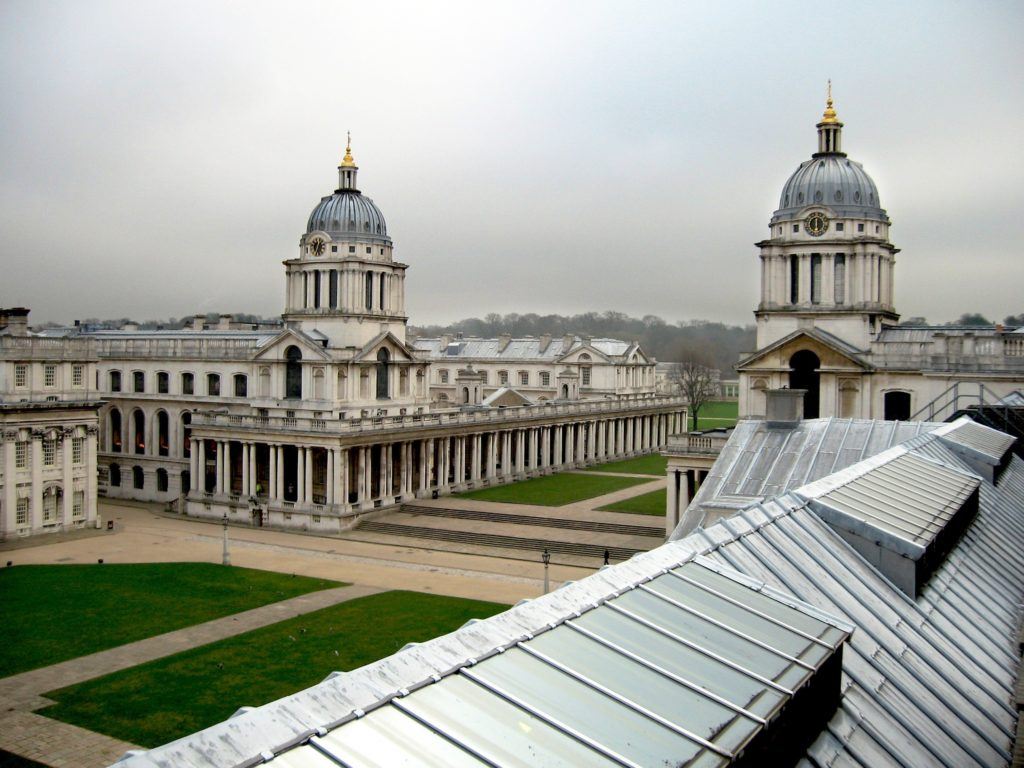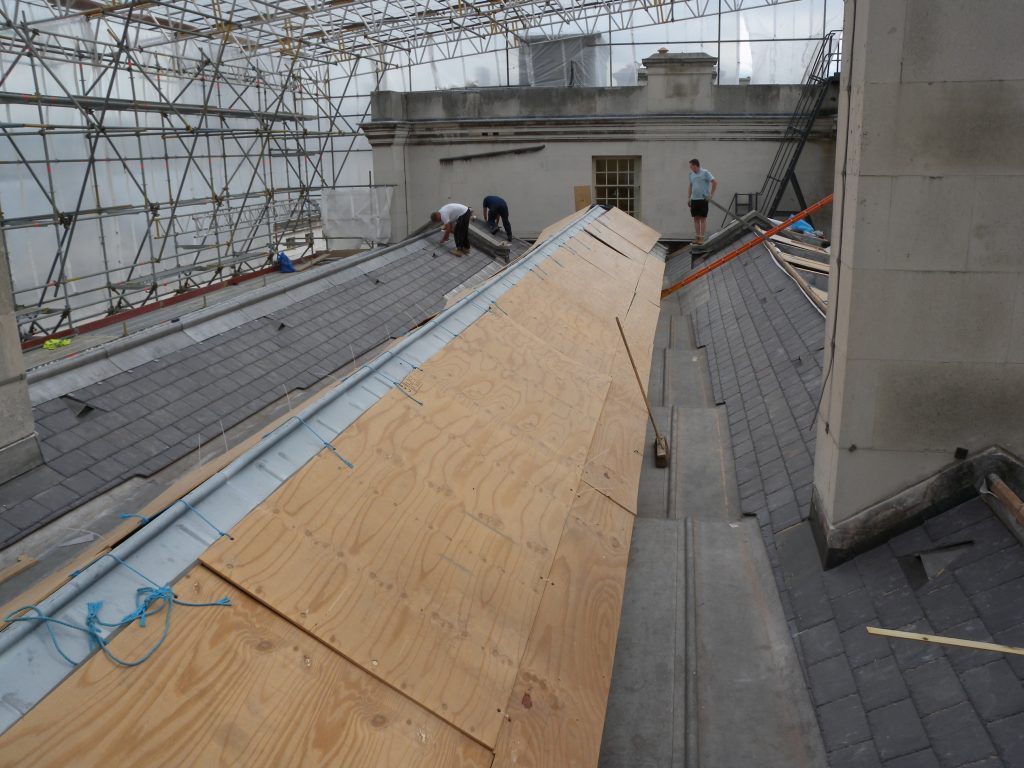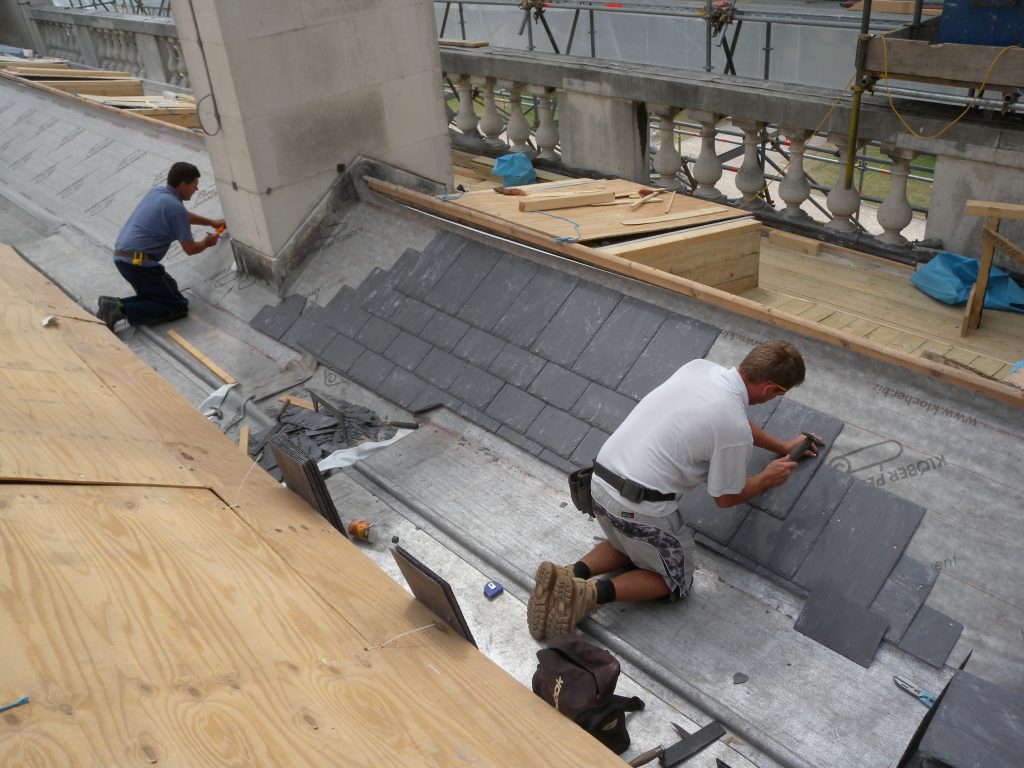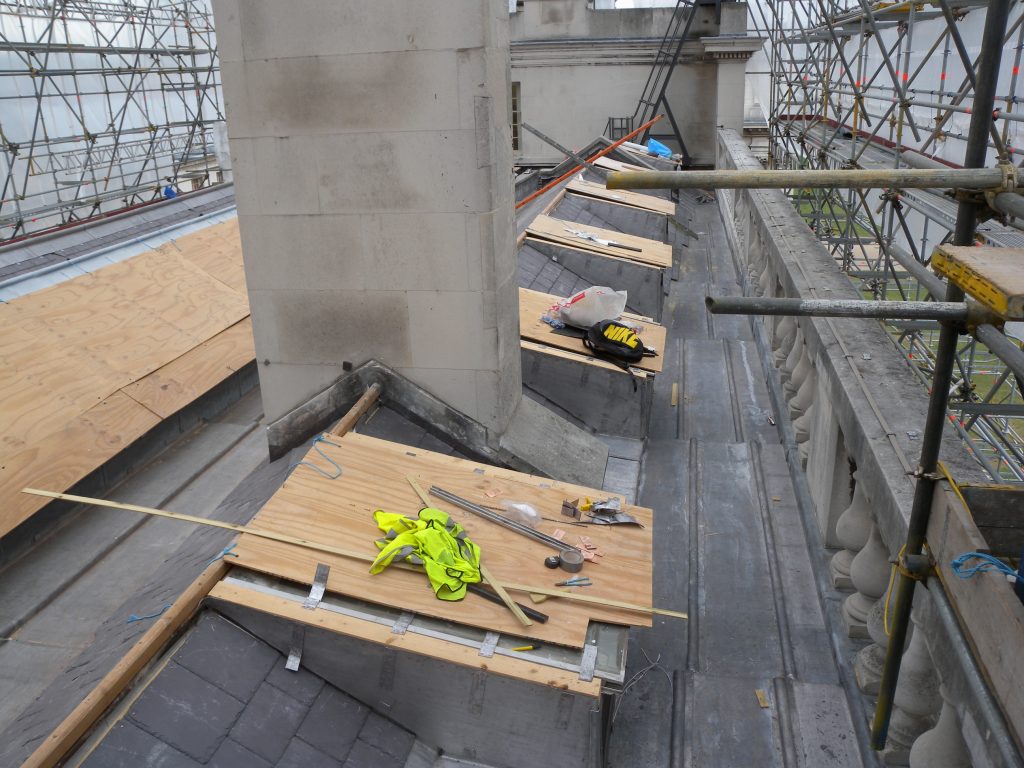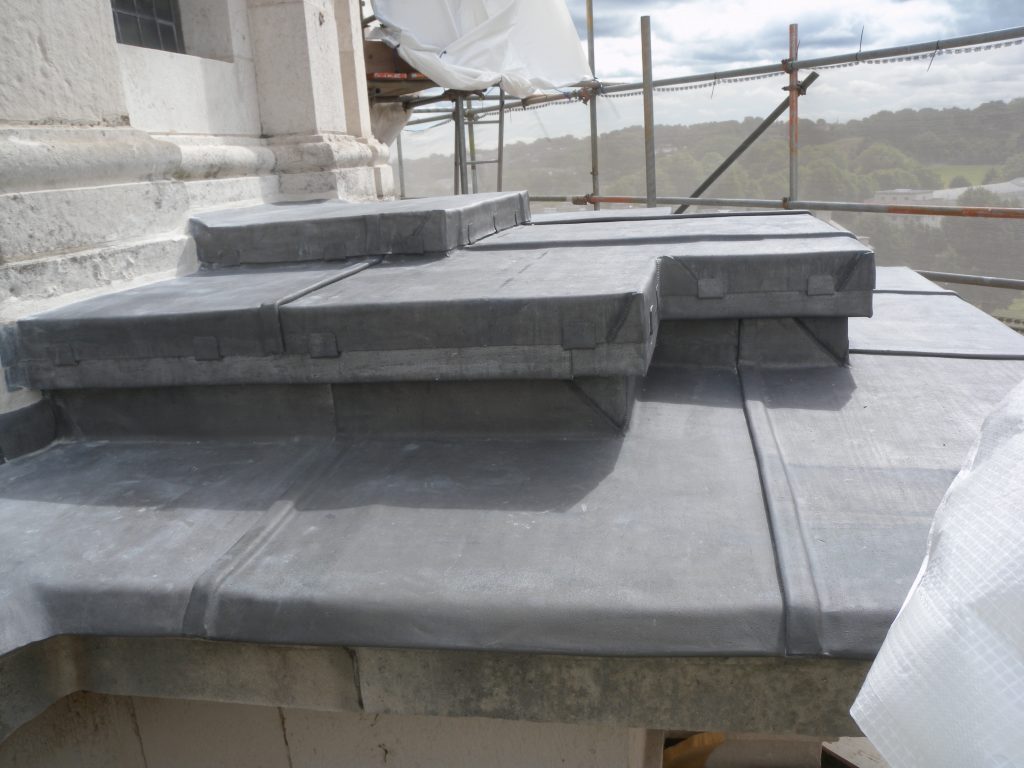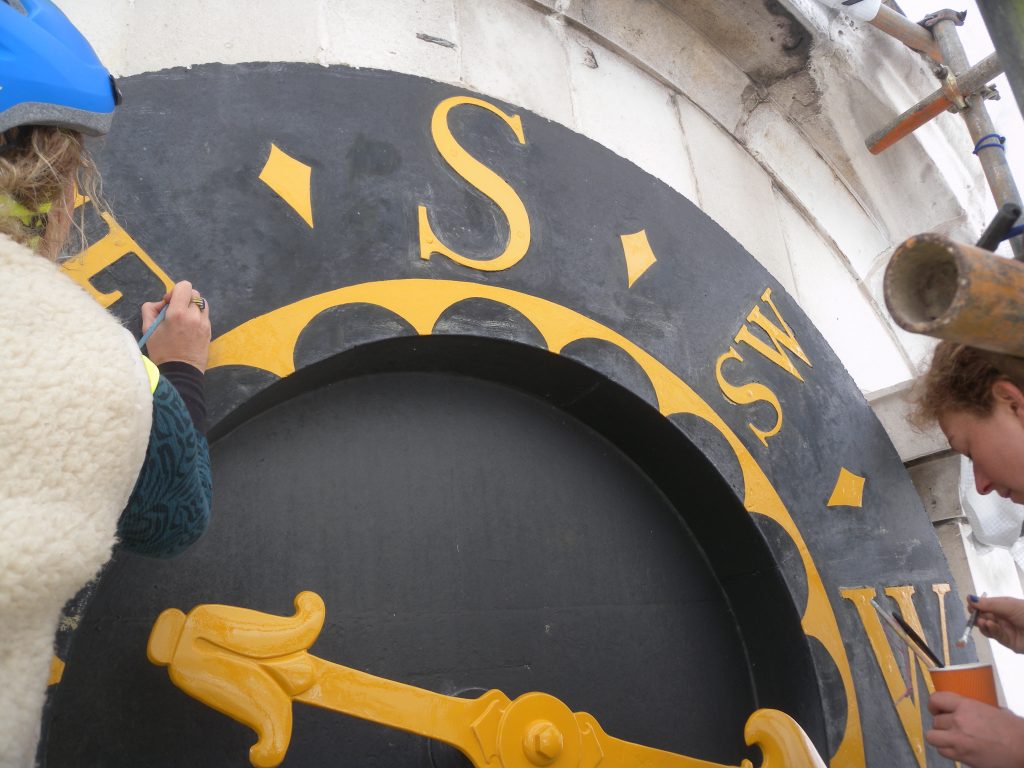Lead roofing repairs
Lead roofing (and associated slating) of the remarkable early 18th Century Great Courts – King Charles, King William, Queen Mary, and Queen Anne – was renewed in the late 20th Century and early 21st Century prior to Greenwich Foundation’s occupancy. Much of the leadwork is fine with normal ongoing maintenance, but inspections and experience have shown that there are particular problems in some locations due to practices, now known to be inadvisable, that were not uncommon in the late 20th Century. To achieve very clean architectural elevations the roofs drain to parapet gutters behind stone parapets and lead rainwater downpipes are buried in the wall structures, so awkward arrangements meaning that the detailing of lead and slate roofing and gutters must be impeccable. Remedial lead and slate roofing repairs have successfully been carried out to a high standard by Greenwich Foundation’s term conservation contractor in against schedules and drawings provided by MAA, and administered jointly by Greenwich Foundation and MAA. Whenever external scaffoldings are erected for external stonework repairs (eg King William and Queen Mary Romney Road elevations) adjacent roofing repairs are carried out to make best use of scaffolding. As a precursor to the Painted Hall paintings conservation programme remedial improvements were carried out to parapet gutter weir-overflow chutes, so that if buried downpipes did block then water would spit out before entering the building fabric. Similarly a very large scaffolding was erected to the King William ‘Tambour’, the base of the drum and stone cornicing below the great lead dome over the King William building. the cornicing was lead-dressed and stonework repaired to minimise risk of rainwater penetration once conservation of the Painted Hall paintings had been carried out. Further re-roofing works across the Estate are scheduled in the Forward Maintenance programme.



